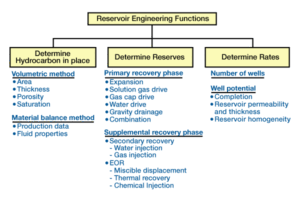Paraffins are organic deposits caused by changing wellbore conditions that upset the chemical equilibrium so that various materials in ...
Read More »Wellbore Cleanout and Scale Removal
After completing this topic “Wellbore Cleanout and Scale Removal“, you will be able answer to: - Wellbore cleanout and scale removal ...
Read More »Diverting Materials in Acidizing
Diverting can be achieved completions like openhole zones, gravel-packed zones, and perforations by varying the diverting material size ...
Read More »Fracture Acidizing | What is the fracture acidizing process?
Fracture acidizing is a process in which acid is injected at a high enough rate and pressure to fracture the formation. It usually ...
Read More »Matrix Acidizing
Matrix Acidizing: This type of acidizing treatment is designed to remove skin damage that extends beyond the immediate surface of the ...
Read More »Additives in Acidizing Fluids
The principal additives to acidizing fluids are corrosion inhibitors. A corrosion inhibitor is a chemical that slows acid corrosion on ...
Read More »Introduction to Acidizing
Acidizing is a chemical process that dissolves unwanted substances in the formation, pipe, surface equipment, or flow-lines ...
Read More »Hydraulic Fracturing Fluids The Ultimate Guide
Learning Objectives: After completing this topic “Hydraulic Fracturing Fluids”, you will be able to: - List the functions performed by ...
Read More »Hydraulic Fracturing Fundamentals
Hydraulic fracturing is a type of well stimulation treatment designed to bypass near-wellbore formation damage and create an improved ...
Read More »Flow Rate Determination in the Wellbore
The tools used to quantitatively evaluate flow volumes downhole are the radioactive tracer/gamma ray and the flowmeter. The radioactive techniques are used mostly ...
Read More » Petro Shine The Place for Oil and Gas Professionals.
Petro Shine The Place for Oil and Gas Professionals.










